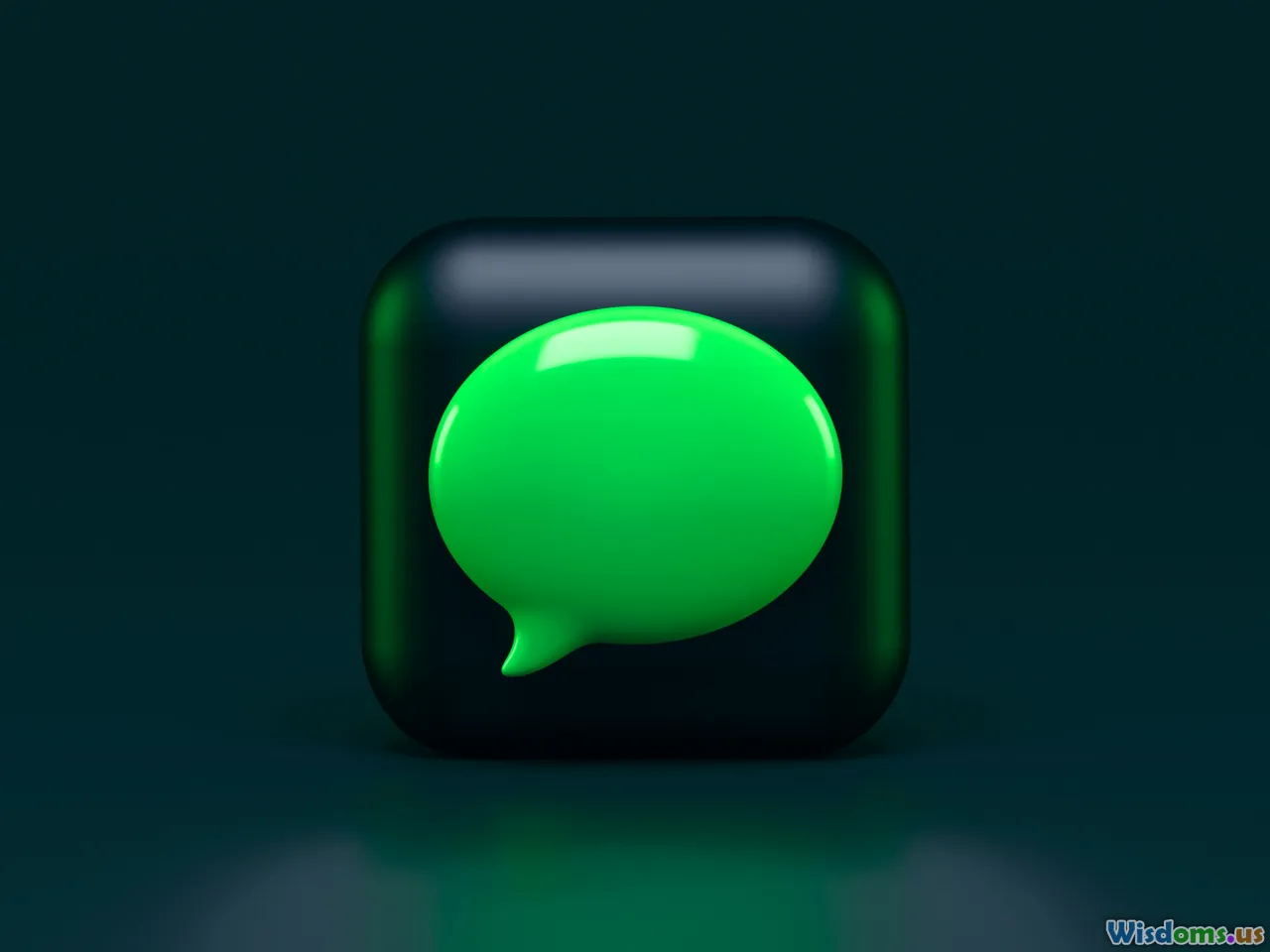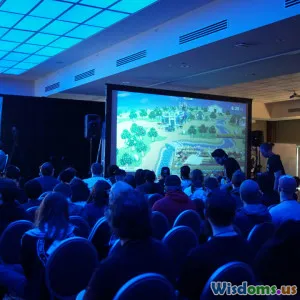
Is YouTube Gaming Overtaking Twitch in 2024?
19 min read Explore if YouTube Gaming is surpassing Twitch in 2024 regarding popularity, features, and creator support. (0 Reviews)
Is YouTube Gaming Overtaking Twitch in 2024?
When a gamer shouts "live!" in 2024, where are viewers more likely to tune in—YouTube Gaming or Twitch? For much of the last decade, Twitch was the go-to haven for live streaming game content, but the playing field is shifting in surprising ways. As the digital entertainment landscape evolves, creators and audiences are reconsidering their platform loyalties. Let’s explore the multitude of factors fuelling YouTube Gaming's ascendance and whether it has truly begun to overshadow Twitch in the race for streaming dominance.
A Historical Rivalry

Twitch—born from the Justin.tv platform in 2011—virtually defined live video game streaming. For years, it led the genre with an engaging chat community, specialized tools, and large-scale events like TwitchCon. According to StreamElements’ 2020 report, Twitch boasted over 7.2 billion hours watched, almost triple that of YouTube Gaming.
YouTube, meanwhile, leveraged its massive video-on-demand culture (VOD) audience and officially launched YouTube Gaming in 2015. While it initially catered to long-form uploads, YouTube expanded aggressively into live streaming. Early on, the platforms drew lines: YouTube was ideal for produced content and Twitch for live interaction. Fast-forward to the mid-2020s, and this separation is blurring.
One prominent shift was the 2021 acquisition of top personalities like Ludwig Ahgren and DrLupo by YouTube, showcasing its commitment to live gaming. This evolution has transformed rivalry into a high-stakes content arms race, setting the stage for an intense battle in 2024.
Exclusive Deals and Content Wars

In recent years, exclusive streaming contracts have shaped the streaming landscape. Twitch previously lured high-profile creators with exclusivity agreements; now, YouTube is making competitive, often more lucrative offers.
Notably, YouTube Gaming signed on prominent Twitch stars such as Ludwig, Sykkuno, and TimTheTatman, each bringing robust fanbases. Ludwig, for example, shifted to YouTube after breaking Twitch's all-time concurrent subscriber record in 2021—a bold signal that top creators saw new opportunity across the aisle. Reports estimate YouTube’s content deals exceed $30 million for elite creators, often bundled with flexible contract terms and relaxed exclusivity.
These deals aren't just about content migration; they signal where the industry is tipping. By 2024, YouTube Gaming commands a substantial lineup of mainstream and niche creators—evidence of its changing role from underdog to legitimate Twitch challenger.
Technology and Platform Features: The Technical Face-Off

Both platforms strive to outdo each other technically, innovating features that make live streaming seamless for both creators and viewers.
Twitch historically led with its instant chat, interactive emotes, and extensions—custom plug-ins ranging from mini-games to interactive polls. However, YouTube Gaming responded with its own suite of user-centric features:
- Latency: YouTube’s “ultra low-latency” streaming closely matches Twitch for real-time interaction, a gap that once favored Twitch.
- Stream DVR: YouTube allows viewers to rewind live streams, a unique edge when compared to Twitch's stricter real-time viewing.
- Moderation & Discoverability: YouTube’s AI-powered moderation tools and advanced tagging make it easier to control chat toxicity and surface streams to new viewers, leveraging the vast infrastructure already present from its core platform.
Innovations like Live Redirects allow creators to "raid" others, echoing Twitch's hosting features. In this heated contest, viewers are the ultimate beneficiaries, as platforms iterate to make the experience smoother, faster, and more reliable than ever.
Community: From Fandoms to Ecosystems

The fuel behind any streaming service is its community. Twitch developed a culture-specific lexicon—think "PogChamp" or "Kappa"—with participatory ecosystems including subs, bits, and channel points. Its interactive chat and channel culture build belonging.
YouTube, by contrast, leveraged commenters from its VOD culture but initially lacked the real-time vibrancy of Twitch chat. That’s changed. In 2022, YouTube unified its chat and comment experience, improved chat moderation, and expanded animated Super Chats and emoji support. These upgrades fostered real-time communities inside a platform already hosting almost every form of media imaginable.
Consider the rise of gaming subcultures: Minecraft, for instance, dominates both platforms, but creators like Dream and Sapnap stream to enormous YouTube live audiences, frequently matching or surpassing Twitch viewership spikes. Each time an influencer stages an event (think: Ludwig's "Mogul Chessboxing" or the Sidemen charity matches), YouTube’s infrastructure delivers reliable, low-latency performance for millions.
With over 2.5 billion signed-in monthly users (according to Google’s 2023 earnings), YouTube gives streamers more tools to cross-promote VOD, shorts, and live content, encouraging community-building that bridges live and on-demand spheres.
Monetization: Where Are Streamers Earning Most in 2024?

For creators, platform choice often boils down to revenue opportunities. Both Twitch and YouTube offer subs, super chats, ads, and sponsorships, but their approaches differ.
Twitch subs are longstanding; viewers pay $4.99/month (or more) for perks. However, ongoing criticism includes its 50/50 revenue split for smaller creators (recent efforts improve this for select partners but not all). Bits (micro-tipping) and ad shares exist, but rates fluctuate based on ad-market dynamics.
YouTube's monetization tools evolved rapidly. In 2024, eligible creators receive up to 70% of Super Chat and membership fees, thanks to lighter minimum payout thresholds. Furthermore, YouTube allows for:
- Multiple concurrent ads: Flexible ad formats including skippable pre-rolls and mid-rolls.
- Direct integration with merchandise and memberships: Shop shelves appear seamlessly under streams, connecting directly to YouTube’s vast commerce ecosystem.
- Shorts Fund and Ad Revenue: Unique to YouTube, creators can monetize both pre-recorded Shorts (YouTube’s TikTok challenger) and long-form VOD uploads alongside live streams.
A survey by CreatorWire (2024) found that 61% of top-earning streamers preferred YouTube’s monetization suite, citing consistent payouts and the ability to monetize across various content formats as winning advantages.
Discoverability and Growth Potential

A recurring critique of Twitch is discoverability. Unless a creator is featured or trending, smaller channels struggle to build audience beyond their immediate following. Twitch’s category-driven search and recommendations are improving, but remain comparatively siloed.
YouTube’s supremacy is its recommendation engine and search infrastructure. A live stream may bring new viewers during broadcast, but YouTube persists value long after: clips, highlights, and the complete VOD surface on “Home,” “Trending,” and personalized feeds. This cross-pollinates audiences without added effort from the creator.
Case in point: Small creators like Data_Noise and SypherPK started as niche streamers but leveraged YouTube’s discoverability algorithm. Their well-edited highlights drew millions, then funnelled viewers back to live broadcasts, creating a virtuous growth cycle. This algorithmic engine is arguably YouTube Gaming’s most disruptive advantage over Twitch in 2024.
Global Reach and Localization

Twitch continues to maintain a global presence—boasting clients and apps in over 20 languages. Nonetheless, YouTube essentially rules the international streaming terrain simply due to its sheer scale and parent company Google’s infrastructure.
According to a Newzoo 2024 report, YouTube Gaming live streams saw double-digit growth in regions like Southeast Asia, India, and Central/South America. Many international creators—such as CarryMinati (India) and TheDonato (Latin America)—find local audiences thanks to regionalized content recommendations, multi-language captioning, and tailored community guidelines.
Events like Free Fire tournaments consistently break live-viewership records on YouTube, sometimes eclipsing the top English-only Twitch streams by a wide margin. For non-English-speaking creators, YouTube’s sophisticated localization tools eliminate language and region as barriers to scale.
Gaming Events & Esports: Big Moments, Bigger Impact

Nothing draws eyeballs like live esports. While Twitch is home to annual events like The International (Dota 2), Twitch Rivals, and summer charity marathons, clubs and publishers are diversifying their platforms.
In recent years, key tournaments like the Free Fire World Series and the 2023 Fortnite Champion Series moved exclusively to YouTube, seeking reliability, higher concurrency limits, and instant archiving. Riot Games simulcasts the League of Legends World Championship on both platforms (as of 2024), yielding useful cross-platform analytics.
For fans, having esports archives, VODs, highlight reels, and live events in one place with chapter markers (a YouTube staple) increases long-term viewing. YouTube includes pic-in-pic on mobile, seamless rewind/clip features, and easy content sharing, lending it a usability boost during high-traffic tournaments.
Platform Policies and Creator Trust

Recurrent moderation mishaps and evolving monetization rules marred Twitch's reputation, with several high-profile creators voicing frustration over unclear bans and copyright claims. The infamous "music DMCA wave" of 2020–2022 on Twitch left many burnt, as content-strikes risked years of deleted content.
YouTube’s policy system isn’t without criticism—auto-flags and copyright sharks persist—but its policy updates are communicated via Creator Insider, and content appeals have become more transparent in 2023–2024. Some creators enjoy YouTube's stability in monetization (even though the algorithm occasionally acts unpredictably). According to a 2024 survey by Harris Poll, 48% of top creators say they trust YouTube more to protect past uploads and clearly outline policy updates compared with 33% on Twitch.
Audience Behavior: Shifting Tides in Viewership

One of the most revealing trends of 2024 is livestreaming on mobile: YouTube’s app boasts over 100 million daily mobile viewers, according to Google, and more than 80% of Gen Z now consumes game content on their smartphones first.
Crucially, the lines between streaming, short-form, and VOD viewing continue to blur. Viewers may catch a live gaming session, re-watch highlights minutes later, and revisit tutorials or skits from the same creator—all without leaving YouTube. This fluid movement between content formats is less seamless on Twitch, where long-form VODs and Shorts equivalents lag behind or sit as siloed features.
While Twitch maintains core loyalists—especially among PC-centric game titles like League of Legends, Valorant, and Counter-Strike—YouTube's hybridized approach better matches the multifaceted nature of modern media consumption.
The Business of Streaming: Future-Proofing and Platform Expansion

Companies and content teams increasingly treat streaming as a business, making multi-platform strategy, analytics, and long-term planning crucial. YouTube’s robust dashboard connects streams with video analytics, revenue reports, and integration with Google’s suite of business tools. This aids talent agencies and MCNs (Multi-Channel Networks) planning brand partnerships, content calendars, and global expansion.
Amazon (Twitch’s parent) is stepping up with new investments, cloud scaling, and rumored integrations with Prime gaming perks. However, Google’s omnipresence means YouTube Gaming connects to every Google-enabled device, embedded search, and upcoming projects—like interactive AR/VR and native YouTube TV streaming.
Large investors take note: As observed by trend analysts at Bloomberg in 2024, advertisers and sponsors increasingly prioritize platforms offering strong discovery, multiple ad formats, and global brand safety controls—criteria where YouTube currently excels.
Tips for Creators: Choosing Your Platform

For those entering streaming today, a few strategic tips emerge:
-
Evaluate Your Content Style – Are you planning daily long-form streams (>4 hours) with deep chat engagement? Twitch excels in core gaming genres with interactive communities. For varied content—mixing shorts, VOD, and hybrid events—YouTube offers unmatched cross-content traction.
-
Diversify Revenue Streams – Monetize not just through live streams, but also by creating clips, shorts and collaborations. YouTube empowers easy cross-promotion, while Twitch remains king of pure live-sub culture for now.
-
Analyze Your Audience – Leverage platform analytics to identify where your fanbase already consumes more content. Don’t ignore emerging mobile-majority trends: YouTube Gaming’s mobile reach is hard to beat.
-
Experiment with Both – Test both platforms creatively. Some streamers rotate between major events on YouTube and regular streams on Twitch. Simulcasting is still limited for partners, but new tools like restream.io (for non-exclusive creators) open up broader audiences.
-
Keep Up with Policy Changes – Regularly review partner agreements and copyright updates—both platforms update guidelines frequently.
-
Engage and Listen – The most successful streamers build brands that are agile and audience-centric. Solicit feedback via community posts, Discord, Twitter, or even in-stream Q&As.
The State of Play: Is Twitch Being Overtaken?

So, has YouTube Gaming overtaken Twitch in 2024?
Statistically, Twitch still commands more pure live streaming hours for gaming in the US and Western Europe, retaining a diehard loyalist culture. But YouTube Gaming is making inroads fast—especially in international markets, mobile viewership, monetization synergy, and VOD-live hybrid use.
Market trackers like Streamlabs report that in Q1 2024, YouTube Gaming’s year-on-year viewership growth outpaced Twitch’s (27% vs. 11%), and the number of unique gaming channels streaming live on YouTube exceeded 13 million.
While Twitch remains dominant for raw live interaction, YouTube Gaming’s arsenal—the world’s largest digital video platform combined with aggressive innovation—is closing the gap. More and more creators are strategizing their content, brand relevance, and earnings based not just on where their live viewers are, but where their broader audience lies—and 2024’s digital playground is becoming undeniably YouTube-fueled.
Whichever you tune into, one thing’s clear: competition between Twitch and YouTube Gaming is sparking a golden age for gamers, creators, and fans alike. The smartest move for today’s streamer? Know both, embrace change, and ride the rising tide of interactive entertainment.
Rate the Post
User Reviews
Popular Posts


















